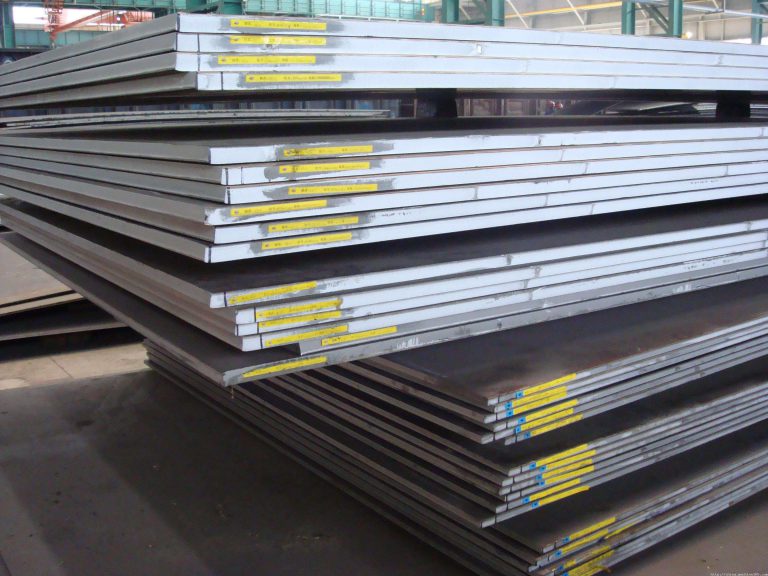asme sa 516 gr 70 hic
SA516Gr.70 is widely used in petroleum, chemical, power station, boiler, and other industries used to make reactors, heat exchangers, separators, spherical tanks, gas tanks, liquefied gas tanks, nuclear reactor pressure shells, boiler drums, liquefied petroleum
Equipment and components such as gas cylinders, high-pressure water pipes of hydropower stations, and turbine volutes.
A516Gr70N meets the requirements of (ASME) ASTMA516/A516M standards, and fully meets the needs of oil gas with a high content of sulfur and hydrogen, reduces sulfur and hydrogen corrosion, reduces equipment maintenance, and increases equipment service life.
The steel plate has the following characteristics: good impact resistance, low-temperature deformation, good welding performance, good fatigue resistance, good anti-layer cracking performance, microalloying, high purity, low carbon equivalent, strong resistance to sulfur and hydrogen,
The products have good dimensional tolerances and surface quality.
We are ASME SA516 Gr.70 and ASME SA516GR.70 steel plate manufacturers,SA516GR.70 stocklist, SA516GR.70 cutting parts, SA 516 GR 70 machined parts supplier. Gangsteel exporter ASME SA516 Grade 70|ASME SA516GR.70 steel plate. SA516GR70 is a carbon pressure vessel steel grade. ASME SA516 GR.70 steel plates stock supplier.Keywords: ASME A516 Grade 70, ASME A516GR.70, ASME A516GR70, ASME A516 GR.70 SA516 Grade 70 steel is a carbon pressure vessel steel grade for moderate and lower temperature service.
SA516 Grade 70 usual request normalized if thickness above 40mm, if not, Gangsteel usual delivery in hot rolled or control rolled station. A516 Gr.70+N or A516gr70N mean that steel grade must be normalized in any thickness.

ASME sa 516 grade 65 stainless steel
Heat treatment
1.·SA515Gr60, SA515Gr70, SA516Gr60, SA516Gr70, SA516Gr60N, SA516Gr70N thickness ≤1.5in, (40mm) steel plate is usually supplied in rolled state, steel plate can also be ordered by normalizing or stress relief, or normalizing plus stress relief.
2. Thickness>1.5in.(40mm) steel plate should be normalized.
3. Unless otherwise specified by the buyer, the thickness ≤ 1.5in, (40mm) steel plate, when notch toughness is required, normalizing should be carried out.
4. If approved by the buyer, it is allowed to use a cooling rate greater than that in the air to improve toughness, but the steel plate only needs to be in the range of 1100-1300°F (595-705°C) subsequently
This film is self-repairing, even when scratched or briefly disturbed by an upset situation within the setting that exceeds the inherent corrosion resistance of that grade. Replacing some carbon in martensitic stainless steels by nitrogen is a current sa516gr.70 steel supplier growth.[when?
The cooling price of the metal needs to be sufficiently gradual in order to not let the austenite rework into bainite or martensite, however quite have it fully rework to pearlite and ferrite or cementite. This means that steels which might be very hardenable (i.e. are inclined to kind martensite beneath reasonably low cooling charges) should be furnace cooled.
The tensile strength of SA516Gr70 is 70 kilopounds per square inch, which is more than 482 as everyone usually says.
The main element content is C Mn Si, and the control of p and s determines its performance.
There are very few other trace elements.
Standard Specification for Carbon Steel Plates for Medium and Low-Temperature Pressure Vessels
SA516Gr70 Chemical detail
C≤0.30��Mn��0.79-1.30��P≤0.035��S��≤0.035��Si��0.13-0.45
SA516Gr70 Property Grade U.S (SI), Tensile strength ksi(MPa) 70 (485) and 70-90 (485-620)
- A full anneal typically ends in the second most ductile state a metallic can assume for steel alloy.
- Other gases, similar to sulfur dioxide, hydrogen sulfide, carbon monoxide, chlorine, additionally attack stainless steel.
- Type 304, the most typical grade of stainless-steel with 18% chromium, is proof against roughly 870 °C (1,600 °F).
- The minimal 10.5% chromium in stainless steels provides resistance to approximately seven-hundred °C (1,300 °F), whereas 16% chromium supplies resistance up to approximately 1,200 °C (2,200 °F).
What is SA in material specification?
If an ASTM material specification has been adopted by ASME, an “S” is added to the designation. The SA (SA-106) means it is a ferrous material specification from ASTM, that has been adopted for Code use by ASME. THis is important to note for material applications on any ASME/National Board Code project.
Type 304 and Type 316 stainless steels are unaffected weak bases similar to ammonium hydroxide, even in high concentrations and at high temperatures. The same grades exposed to stronger bases similar to sodium hydroxide at excessive concentrations and high temperatures will likely expertise some etching and cracking. Increasing chromium and nickel contents present elevated resistance.
] The restricted solubility of nitrogen is elevated by the strain electroslag refining process, in which melting is carried out under excessive nitrogen pressure. Steel containing as much as 0.four% nitrogen has been achieved, leading to greater hardness and strength and better corrosion resistance. As PESR is dear, decrease however vital nitrogen contents have been achieved utilizing the usual argon oxygen decarburization process.
In annealing, atoms migrate in the crystal lattice and the number of dislocations decreases, resulting in a change in ductility and hardness. For many alloys, together with carbon steel, the crystal grain measurement and section composition, which ultimately determine the material properties, are depending on the heating price and cooling price. Hot working or chilly working after the annealing process alters the metallic structure, so additional warmth remedies may be used to achieve the properties required.
The details of the method depend on the kind of steel and the precise alloy involved. In any case the result is a more ductile material but a decrease yield strength and a decrease tensile strength. This process can be called LP annealing for lamellar pearlite within the metal trade versus a process anneal, which does not specify a microstructure and only has the aim of softening the fabric. Often the fabric to be machined is annealed, and then subject to additional warmth remedy to achieve the ultimate desired properties. Stainless steels have a protracted history of software involved with water because of their excellent corrosion resistance.
